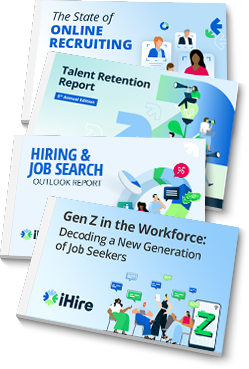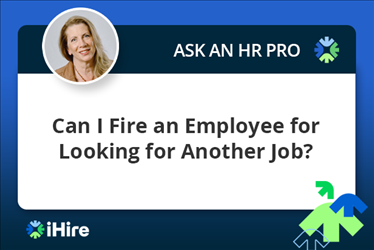- Employer Resources
- |
- Last Updated: July 13, 2021

How to Incorporate “Work From Home” Into Your Workplace Long Term
If your current employees and job candidates are asking about work-from-home options, you’re not alone. Interest in remote work has never been higher. In fact, nearly half of respondents in a recent iHire survey said they wanted a job that allowed them to work remotely. And, 47.8% said it was “very important” or “important” for them to search for a job with remote work options.
If you want to incorporate telework into your workplace long-term, now is the perfect time to make a plan.
The Benefits of Telework
Remote jobs aren’t just a game-changer for employees. Employers can benefit too. Take a look at some of the perks:
- Increased options for tapping into talent across the country and the world. Now when you need to fill an opening, you won’t have to restrict your search to your specific location. Instead, you can hire top talent from different geographic and cultural backgrounds, which also promotes diversity and inclusion.
- Cost savings. When employees work off-site, you save money on computers, phones, utilities, office supplies, and office leases. In addition, employees save on expenses for gas, parking, childcare, and lunches.
- Positive impacts on the environment and sustainability. When employees stay home, they minimize commuting miles, traffic congestion, and air pollution. That reduces your carbon footprint.
- Higher productivity. Work from home means fewer distractions and a more comfortable workspace — which means employees are able to better focus on performance. In a recent Boston Consulting Group study, 75% of employees said they’ve maintained or improved their productivity levels during periods of remote work.
- Greater job satisfaction and retention. Employees who work from home enjoy more flexibility and less stress. Remote work options are also in high demand right now — which means that offering them extended telework arrangements can help your retention levels, too.
Start With the Job Ad
You want your job ad to attract job candidates who are looking for remote work options — so it’s a good idea to include common keywords in both the title and the job description itself. Some of the most popular keywords include:
- Remote
- Work remotely
- Work from home
- Virtual
- Home-based
- Telecommute
Make sure to address the specifics of your remote work options, such as whether the job is 100% remote or offers some telework flexibility. If you have a work-from-home policy where employees can stay at home two days a week and report to the office the rest of the week (a hybrid model), communicate that expectation.
For fully remote positions, the job ad should also describe your work-from-home policy, including which equipment remote workers are expected to provide, what hours employees need to be online, and any expectations for attending in-person meetings or team events.
Amend Your Benefits Plan
If your employees work from home, they won’t experience some of the same perks as on-site coworkers, such as free lunches or gym access. That’s why it’s a good idea to rework your benefits plan to accommodate remote employees. Some of the benefits that may appeal to remote workers include:
- A stipend for a gym membership, digital wellness services, or workout apps
- Flexible schedules (if employees need to start later or earlier in the day)
- Food delivery (such as a $20 a week stipend for lunch)
- Allowances for home office equipment
Create Your Account Today

Consider Hybrid Models
For companies that understand the benefits of remote work but also appreciate the value of in-person collaboration, hybrid models may be a good fit. You’ll be able to accommodate the needs of both sets of workers — those who prefer remote work and those who would rather stick to traditional in-person settings.
Hybrid models can look different depending on the organization but generally involve some combination of working remotely and in the office. This could include three days on-site and two days at home.
If you do choose a hybrid model, it’s important to create a consistent experience for all employees. Schedule meetings online and have everyone join from their laptops, even employees who work in the office. Strive to get remote employees’ input on decisions whenever possible.
Telework can be a viable long-term option for your organization. For more help managing and recruiting employees for remote jobs, check out our Remote Recruiting Toolkit.
RELATED RESOURCES
Hiring? You're in the Right Place.
- Reach unique talent: 51% of our candidates aren't using other job boards
- Connect your ATS and get 6x more applications with iHire's apply process
- Get matching candidate resumes sent straight to your inbox
We Value Your Privacy






